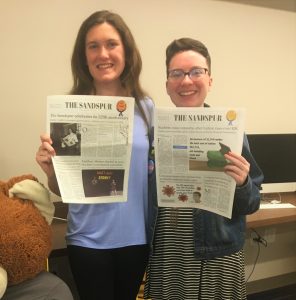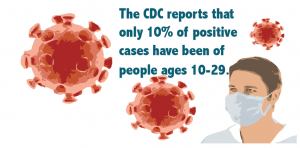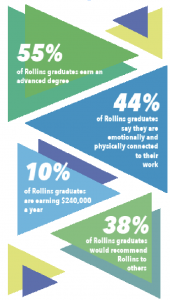[youtube id=”F4ZdklIw4Zc” width=”620″ height=”360″]
Portland, Oregon is a city with a culture unlike any other in the world. Portlanders share a common sense of protecting the environment, proof of a deep-rooted history in a nature-based economy, originally grounded in timber and agriculture. Through visionary figures such as Lewis Mumford and the Olmsted brothers (sons of Frederick Law Olmsted, designer of Central Park in New York City), devoted officials like Tom McCall, and the keen collaboration of government and citizens, Portland has become a vibrant model for livability in a city oriented around its people, not machines.
In 1904, the Olmsted brothers created a park plan for Portland, outlining green spaces and greenways within the city. Although their ideas were not immediately recognized, their plan became the model for Portland’s future green space development, inspiring Portland’s current urban structure.
Lewis Mumford was a visionary city planner with an enlightened view on creating sustainable regions. His dream of a collaborative balance between nature and culture, along with his mindfulness to the arrangement of landscape, made him the perfect candidate to assist in planning the city’s future. Prior to visiting Portland, Mumford had written several works, pioneering regionalism as a means of constructing cities, and warning of “urban dwellers evolving into robots, removed from nature, dependent upon artificial means for survival, and programmed to consume” (Stephenson, 1999, 260).
Upon his arrival in Portland, Mumford instantly grasped the need to preserve the natural landscape, as he was mesmerized by the cascading mountains and fertile valleys. He observed the steady destruction of the surreal landscape by greedy capitalists exploiting its natural resources, and in a speech to Portland’s City Club, he questioned the people of Portland whether or not they were worthy of that exceptional land after neglecting to preserve its beauty (Stephenson, 1999, 262). Envisioning a system of green spaces, local markets, and community-based living, he proposed a regional authority system that governs development based on regionalism, and that overlooks and overrides local governments to see to the greater good for the city. This proposal eventually evolved into Metro- Portland’s regional government system, (Stephenson, 1999, 262).
Metro, which incorporates 24 towns within the metropolitan area, is the product of Tom McCall’s political activism which recognized the magnificence of the landscape and the importance of preserving the agricultural utopia. A council of citizens was elected to manage regional planning goals, an “in 1978 voters approved a new charter that gave metro formal powers for regional planning. This referendum made Metro the nation’s only directly elected regional government,” (Stephenson, 1999, 264). “By law, only cities and counties have the responsibility and authority to develop comprehensive land use plans,” but in Oregon, they “are the primary legal documents guiding all local planning and development decisions,” (Seltzer, 2004, 38). By 1978, Oregon had lost 30,000 acres to sprawling development, (Making Sense of Place, 2009). The state knew something had to be done to prevent the suburban sprawl that was plaguing other American cities at the time.
In 1979, a 364 square mile Urban Growth Boundary (UGB) was established by Metro. This boundary drew a line around the regional zone, restricting urban development, and in turn protecting the surrounding natural resources. Portland’s UGB provides countless benefits for Oregonians. In a documentary on Portland’s success, the citizens are excited about the UGB because they can see exactly where their produce is coming from, and farmers care more about their harvest because they know the locals that consume their yields (Making Sense of Place, 2009).
What makes Portland such a spectacular model for livability is not just the protection and promotion of the surrounding natural landscape, but also the efforts inside the Urban Growth Boundary. Although it took nearly 70 years for the city to grasp Mumford’s concept of regionalism and the Olmsted brothers’ parkway system, Portland was finally on its way to developing a sustainable strategy for livability.
The lessening of dependency on the automobile has been one of Portland’s greatest successes. Jeff Speck recently spoke of Portland’s push to becoming a walkable city. He discussed the health risks of revolving cities around the automobile, citing the term “environmental induced inactivity,” (Speck, 2013), explaining the direct correlation between how cities are designed and the health of its citizens. Not only is walking, biking, and relying on public transport healthier, it is safer. Building cities around people lessens the chances of car crashes—currently the leading cause of death in America. “Was [your city] designed around cars or around people? Because when your city is designed around cars, it’s really good at smashing them into each other,” (Speck, 2013). Portland’s citizens possess the ability to live without a car, greatly increasing their quality of life, while simultaneously decreasing their cost for transportation.
Portland’s lifestyle offers greater civic opportunity than any other American city, drawing in the creative, active, change-making millennials. “Portland has taken hold of the cultural imagination as, to borrow the tag line from ‘Portlandia,’ the place where young people go to retire,” (New York Times, 2013). Portlanders are finding that with the saved costs on transportation, they are able to spend more time and money on recreational activities, such as food, music, and nightlife, which all attributes to the city’s culture (New York Times, 2013). Designing a regional landscape for a higher quality of life results in a flood of young, creative freethinkers.
Portland is consistently praised as the most sustainable city in the United States. Youthful, intelligent, liberally opinionated people are flocking to the city, even though they know that jobs are thin there. “Personal income per capita in the city grew by a mere 31 percent between 2000 and 2012, slower than 42 other cities… And yet people keep showing up” (New York Times, 2013). What attracts them is the progressive culture, extraordinary urban structure, and limitless social capital. Portland is a model city for sustainability and livability, and it is consistently inspiring other American cities to follow in its path.












Be First to Comment